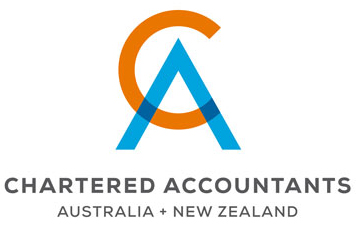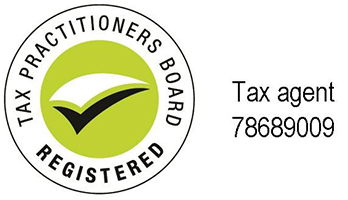ATO urges caution with SMSF property investments
The ATO has warned trustees of self-managed superannuation funds (SMSFs) to be cautious when investing in property, by issuing Taxpayer Alert TA2012/7.
The ATO is concerned that people are using their SMSFs to invest in property without fully understanding their obligations under the law, or that some people are seeking to take advantage of certain types of arrangements.
"The fine details are important and trustees need to be sure that property is the right investment for their SMSF and that the arrangement is legal."
"Some of these arrangements, if structured incorrectly, cannot simply be restructured or rectified. The only option may be to unwind the arrangement which could involve forced sale of assets at an inconvenient time. This could be very expensive for the fund with potential stamp duty and tax consequences."
In addition, the ATO states that where arrangements are deliberately entered into to get around the law, this can result in the fund’s trustees being disqualified, facing civil penalties or even facing criminal charges.
What arrangements are the ATO concerned about?
The Taxpayer Alert applies to arrangements with features substantially equivalent to the following:
Arrangement 1 – Property investments using Limited Recourse Borrowing Arrangements (LRBAs)
The ATO is concerned where an SMSF enters into a LRBA to acquire an asset, and the arrangement has at least one of the following features:
- the borrowing and the title of the property is held in the individuals’ name and not in the name of the trustee of the holding trust, and the SMSF funds part of the initial deposit and the ongoing loan repayments;
- the title of the property is held by the SMSF trustee not the trustee of the holding trust;
- the trustee of the holding trust is not in existence and the holding trust is not established at the time the contract to acquire the asset is signed;
- the SMSF acquires a residential property from the SMSF member;
- the acquisition comprises two or more separate titles and there is no physical or legal impediment to the two titles being dealt with, assigned or transferred separately; or
- the asset is a vacant block of land. The SMSF intends to use the same borrowing to construct a house on the land. The land is transferred to the holding trust prior to the house being built.
Note: The last two features are of particular concern where the LRBA was entered into post 7 July 2010. The ATO considers that arrangements of this type give rise to the following issues, being whether:
- the investment arrangements may be in breach of the sole purpose test in S.62of the SIS Act;
- S.67 of the SIS Act (which prohibits the SMSF trustee from borrowing money or maintaining an existing borrowing) may have been breached;
- the asset acquired is not a ‘single acquirable asset’, as required under S.67A(2), as it is comprised of two or more proprietary rights;
- the acquirable asset is subject to a charge which would prohibit an SMSF trustee from borrowing money, or maintaining a borrowing of money under S.67A(1)(f); and
- the deposit paid by the SMSF and/or loan repayment by the SMSF may effectively be considered a payment of superannuation benefits to members (in contravention of Part 6 of the SIS Regulations) where the title of the property is not held by the trustee of the holding trust.
In addition, the member(s) may be required to include the SMSF loan repayments in their assessable income under Div.304 of the ITAA 1997, and the income (and its associated deductions) from the investment should be declared by the individual member(s) rather than by the SMSF where the investment is not held for the beneficial interest of the SMSF.
Arrangement 2 – Property investments using related unit trust
An individual or individuals (‘the fund members’) establish an SMSF and rollover their existing superannuation benefits into the SMSF, or are members of an existing SMSF.
A unit trust (‘the unit trust’) is established for the purpose of acquiring a property (or alternatively an existing unit trust is to be used), which is a ‘related unit trust’.
The fund members subscribe for units in the unit trust, possibly borrowing money from a commercial lender to fund the subscription, and the SMSF also subscribes for units.
The trustee of the unit trust purchases an asset (‘the asset’), such as a property which is rented out.
The arrangement has one or more of the following characteristics:
- the asset acquired by the unit trust is used as a security for the money borrowed by the members to subscribe units in the unit trust;
- the assets of the unit trust include an asset that was acquired from a related party of the superannuation fund which is not business real property; and/or
- the assets of the unit trust include real property which is leased to a related party of the superannuation fund, and the real property subject to the lease is not a business real property.
The ATO considers that arrangements of this type give rise to the following issues, being whether:
- the investment arrangements may also be in breach of the sole purpose test;
- the SMSF’s investment in the unit trust fails to meet the requirements of Regulation 13.22C of the SIS Regulations (which provides an exclusion from the in-house asset rules for ‘non-geared unit trusts’); and
- the SMSF’s investment in the unit trust is an in-house asset under S.71 of the SIS Act, therefore counting towards the 5% limit under S.83.
As a result of non-compliance with the SIS Act, the SMSF may become a non-complying superannuation fund for tax purposes and, if the unit trust needs to dispose of the relevant property, the unit trust may incur a CGT liability, or the members and the SMSF may be required to include a capital gain in their assessable
income if they need to redeem their units in the unit trust.
Ref: ATO Media release 2012/51, 20 November 2012 and TA2012/7

